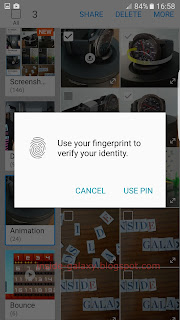Camera is now become an important part on smartphone because people today love to capture any moment with their phones anytime and anywhere to be their personal collections, to be shared via social media services and websites, etc. Samsung Galaxy S7 Edge itself has 5MP front camera and 12MP rear camera with a set of useful features to help you take a better photo and record a better video. You're also provided with some features that will help you easily and quickly launch the Camera app in any condition.
Here's some ways available that you can use to launch the Camera app:
1. From the apps menu
It's the common method to access all installed apps in your phone, including with the Camera app. Go to the apps menu and find the Camera app to launch it.
2. From the home screen
By default, your phone sets the Camera app as one of the app shortcuts in the home screen, which means you can use it to easily launch the Camera app from the home screen.
3. From the lock screen
By default, your phone sets the Camera app as one of the lock screen apps, which means you can use it to easily launch the Camera app when your phone's screen is locked.
4. From the edge screen panel
You can easily launch the Camera app from the edge screen panel if you have added the Camera app in the apps edge panel or added the specific function of the Camera app in the tasks edge panel. However, if you access the edge screen panel from the lock screen while the it's locked with a secure screen lock type, such as PIN or fingerprint, you have to perform the screen lock first before the Camera app is opened.
5. By using the quick launch camera feature
If you have enabled the
quick launch camera feature, you can quickly launch the Camera app from any screen simply by pressing the Home key twice in quick succession.
6. By using S Voice command
If you have activated your S voice wake up command, you can easily launch the Camera app from any screen simply by saying "
Hi Galaxy, open Camera". Your phone has to be connected to the Internet to make it works.
7. By using voice search"OK Google" detection
While you're using the Google voice search, you can say "
OK Google, open Camera" to launch the Camera app. You can also use this voice command in any screen to launch the Camera app in condition that you have activated your voice search"OK Google" detection in the Google settings. Your phone has to be connected to the Internet to make it works.
 to go to the settings menu.
to go to the settings menu. when it's enabled.
when it's enabled.





































